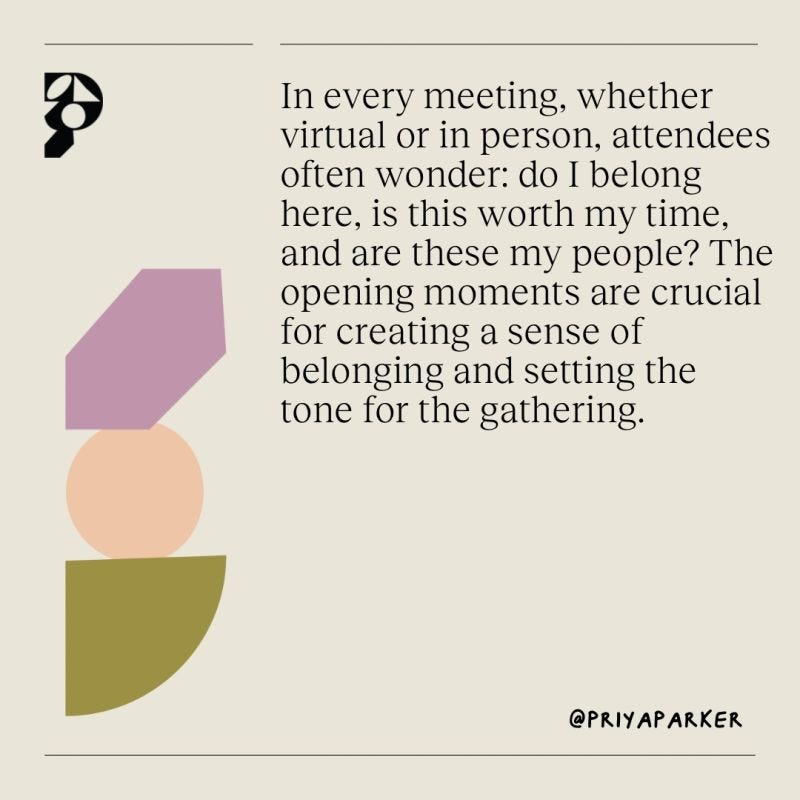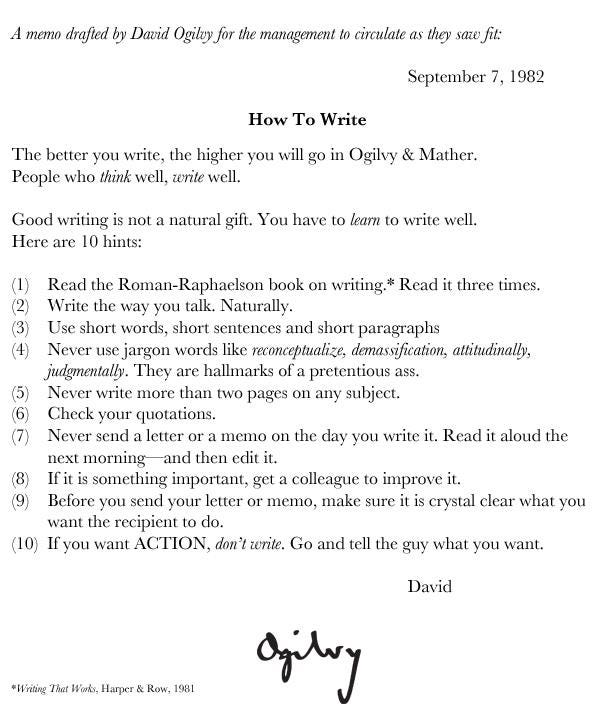Once upon a time, a Switchboard Exchange was the central place where telephone calls were connected and information flowed. Similarly, this edition is filled with content that crossed my path and captured my curiosity. I share these highlights with you in a unique format from my typical editions.
Below are the three themes I focus on in this edition. Learn more in the posts and takeaways.
🪀 Culture
📖 Internal Communications
🎯 Operations
Culture
🔥 Lenny Rachitsky: Communicate like Your Product
Lenny is the Author of
and host of Lenny’s Podcast. In this post, he references his interview with Cameron Adams, Co-founder & Chief Product Officer at Canva.Cameron Adams' insight that the way your company communicates is influenced by the type of product you're building has stuck with me ever since he suggested it. e.g. Spotify = talking. Canva/Figma = decks/designs. Stripe/Amazon = writing/documents.
🎬 Takeaways: Lean into what makes your organization unique. Celebrate it internally and externally. 📖 Ken Weary: Create an Employee Cookbook
Ken is the COO of Hostaway and formerly COO of Hotjar. In this post, he shares an internal community building program — an employee cookbook.
I'm frequently asked how Hotjar builds a sense of community for its fully remote team. For context, we have no offices, and we're spread across 48 countries.
The short answer is through deliberate actions focused on our core values and always involving our team. The long answer involves citing example after example of how we do this. Today, I want to share one of them.
Introducing 'hot plates'. An 84-page, hardcover cookbook sourced and written exclusively from our team across the globe. It's packed full of tasty meals, snacks, and drinks that will blow your mind.
This limited edition, first-run print is just one of the many small ways we build team unity through direct engagement. Want a copy? First, you have to be one of our team members. Then you have to participate in one of our internal activities or contests for a chance to win a copy.
If you're trying to build a community, please keep in mind that it's the small, deliberate actions that make all the difference.
🎬 Takeaways: It’s the small actions that matter. Pay attention to the details. Get to know your team mates' heritages and identities and invite them to share their favorite foods. 👟 Peter Fasolo, Ph.D.: Take Steps for Employee Health
Peter is Chief Human Resources Officer at Johnson & Johnson. As a leader, he shares how he supports and participates in the program.
There’s a direct link between employee well-being and business results. When employees have the tools and resources to succeed both professionally and personally, the company’s bottom line benefits as well.
I’m passionate about building a culture that emphasizes our Johnson & Johnson employees’ total health and well-being so that people are empowered to bring their best selves to work.
One key element of our total health and well-being focus is on physical well-being. There are countless benefits to exercise, and research shows that physical activity improves one’s next-day job performance and overall health, helping to raise job satisfaction, reduce burnout and improve employee retention. More so, putting our own well-being first empowers us to care for others and build a healthy community.
My favorite way that we live out this commitment to physical well-being is through our annual Global Activity Challenge. This summer, more than 33,000 of my colleagues around the world and I teamed up to put our health first, track activities of our choice (mine was cycling), and build a sense of community while engaging in some healthy competition.
When our employees are inspired to care for themselves, great business results will follow.
🎬 Takeaways: Wellbeing should be prioritized at all levels. Consider additional outlets such as connecting employees with nature. Internal Communications
🎉 Priya Parker: Make Time for Introductions
Priya is the author of the Art of Gathering. She shares guidance for the importance of introductions.
In every meeting, whether virtual or in person, attendees often wonder: do I belong here, is this worth my time, and are these my people? The opening moments are crucial for creating a sense of belonging and setting the tone for the gathering.
🎬 Takeaways: Try different ice-breakers or consider unique ways to spark connection and foster strong internal communications by focusing on everyone around you. Consider going deep with questions that you might ask your Executives and invite employees to answer. 🚢 Dickie Bush: Embracing an Advertising Legend's Memo Style
Dickie talks about digital writing and personal progress. His newsletter, Dickie’s Digest is a great resource and course, Ship 30 for 30 helps people learn digital writing techniques. He teaches what we can learn from an advertising icon, applying external best practices internally.
In 1982, David Ogilvy wrote an internal memo to his employees titled "How to write." It's a 10-bullet writing masterclass.
At the start, he gave a specific why for the memo: "The better you write, the higher you will go in Ogilvy & Mather. People who think well, write well. Good writing is not a natural gift. You have to learn to write well."
Replace "Ogilvy & Mather" with your company name. And then staple these writing rules to your desk:
🎬 Takeaways: Make it easy for colleagues to understand your work. Apply these best practices to your internal writing and meetings. Operations
☀️ Wes Kao: How to Think About Impact at Work
Wes is the Co-Founder of Maven and writes
. She shares a famous quote from an artist and how it applies to our daily work.My favorite quote for building a team of high performers: Picasso said, “There are some painters who transform the sun into a yellow spot, but there are other painters who with the help of their art and their intelligence, transform a yellow spot into the sun.
"Turning a yellow spot into the sun" means being someone who:
• turns a little into a lot
• surprises and delights
• elevates the mundane
• is relentlessly resourceful
• shows flashes of brilliance
• raises the bar for what's possible
• doesn't need step-by-step directions
• comes up with clean, tight, elegant solutions
Most people do the opposite: they have near-infinite resources at their fingertips (much of it simply from living in the age of the internet), but come back with mediocre work.
Be someone who turns a yellow spot into the sun.
🎬 Takeaways: To stand out, think ahead and always keep the other person top of mind. Most of all: never forget the power of a thank you. 🀄 Heidi Hackemer: How to really be a Strategist
Heidi is a “strategist, founder, systems thinker and facilitator.” She shares her thoughts on what strategy really means.
Strategy is not the practice of making shit up.
In fact, great strategy is more about facilitation than it is about creation. It’s the process of unearthing what is true for an organization, matching that with opportunities in the world and creating pathways so that more people can participate in that work.
Strategy is an act of democratization in an organization. It’s prying the understanding from the founder or the C-Suite or “team that gets it” and making that accessible to more people in the organization so that they too can confidently fight the good fight and feel purposeful in their work.
It breaks unnecessary organizational bottlenecks, empowers more people and makes more people feel belonging and confidence in their work.
🎬 Takeaways: Take time build strategies, but also to be a translator and build bridges amongst employees. Here’s a guide for internal communicators to become better strategists. ⚓ Molly Graham: Become Better Owners
Molly is a company builder, newsletter writer and founder of The Glue Club.
Unclear ownership is honestly the single thing that slows most companies down.
Success comes from hundreds of projects being executed really well. Great execution often boils down to two things: 1) a clear, aligned definition of success and 2) a single, clear owner. If your most important goals don’t have one name next to them, if your most important projects don’t have a clear, SINGLE owner, you are likely moving more slowly than you could or should be.
A lot of companies use models like RAPID or RACI to try to clarify ownership and roles on a project, but I honestly find those models exhausting because there are so many letters. What’s the C? What’s the difference between the A and R? D vs P vs I?
At Lambda School, we rolled out a model called Captains. Laura Reisert helped us find the right word and develop the model based on language from how Trader Joe's organizes store teams.
Captains is an elegant, simple model that enables you to focus on the most important thing -- designating a clear, single owner for a project or goal. And then makes it the responsibility of the Captain to ensure the project is executed well. Said in RAPID or RACI terms, we designated the Captain for a project and then they were responsible for ensuring that the rest of the letters in the model got figured out. I wrote more about the Captains model over here: https://lnkd.in/ezpk95Vv.
🎬 Takeaways: The ways we work together matter. Take steps to work better as a member of a team.Thanks for tuning into this edition of The Switchboard. If you have a recent post that’s captured your curiosity, nominate it for a future feature. You’ll receive recognition in that edition. Reply to this email or message me.
I appreciate you letting me know if this article resonated — give it a heart, comment below or share it on LinkedIn. Since this content came from LinkedIn, I’m also sharing it via a special edition newsletter there. Signing off for this edition. — Julia







